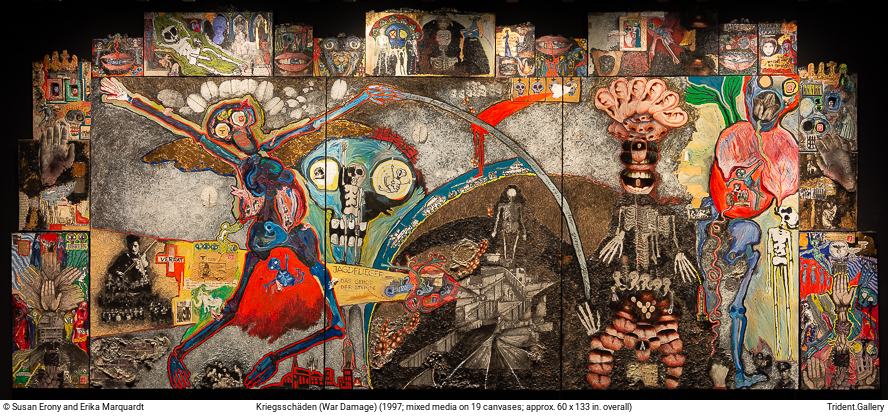
German-born artist Erika Marquardt and I worked together for eleven years. We met in 1995, when art critic and curator Charles Guiliano, and curator and writer Astrid Heimer, introduced us and asked us to show our work in an exhibition addressing the legacy of World War II, National Socialism, and the Holocaust. That same year, we were invited to do so again in Leipzig, Germany. While in Germany together, our conversation deepened and increased in complexity to the point that we decided to bring our dialogue literally onto canvas.
Erika Marquardt was born in Berlin in 1937. Her father was a train engineer and an officer in the Wehrmacht. She does not know much of what he did. After the War, the family lived in the former East Berlin, from which they escaped just before the Wall was built. Her father had refused to join the Communist Party and feared imprisonment. Erika is thus the daughter of a perpetrator, willing or unwilling, of the Holocaust, but she also experienced the trauma of having been a child in war and the daughter of a POW in Soviet labor camps. Her complex legacy informs her work from every direction.
Kriegsschäden was a highlight of our work together. Erika thought we were trusting each other enough by then to really let go in it, and we did so to the point of scaring ourselves with the imagery. It is a gruesome, horrific piece, a vomiting of historical traumas. Tied to World War II and the Holocaust, I saw it as addressing, in poet Heinrich Heine’s words, “a great period of human illness.” It was also a larger attempt to understand the incomprehensible.
Matthew Swift asked me to say why I thought it would be important to show this piece twenty-two years after its creation, a piece about events seventy-five years ago. To me, Kriegsschäden was and is about the cultural disease that allows us to completely dehumanize others. Sadly, it is a chronic disease with acute flare-ups, a disease of the spirit creating a soul-less world. One reason scholars have been fascinated with the Holocaust is that the comprehensive documentation by both perpetrators and victims is a step by step guide to the creation of a society capable of living with crimes against humanity and even genocide, even on its own soil, even against its own citizens.
We should, as a society, ask ourselves now how far it is from detention camps at our border, where people are kept in cages and where children are separated from their parents, to other kinds of camps? How far is it from working to deny health care and food stamps to the poor, from starving their public schools, from consolidating every government-influenced penny possible with those who already have plenty, to watching those poor die in ghettos? How far to the point when more hungry mouths scream at us to listen?
Kriegsschäden literally means “war damage,” and that is how Erika and I thought of our piece in 1997 when “war” meant World War II to us. As I look at it today, I see the war being addressed as the one for our own country, and the damage to our society already evincing the monsters in this piece.


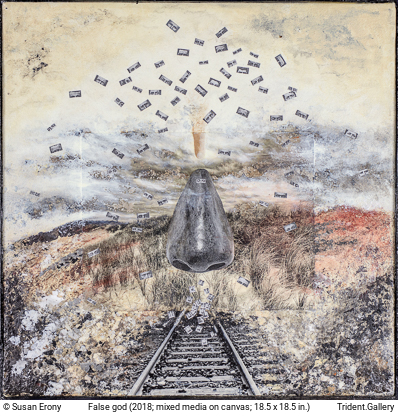
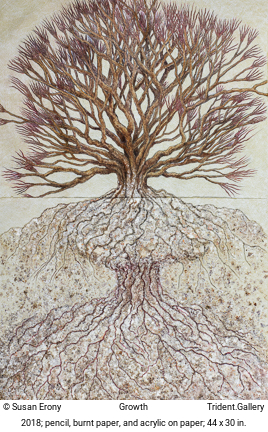

_1000x400px-screen-cap2.jpg)
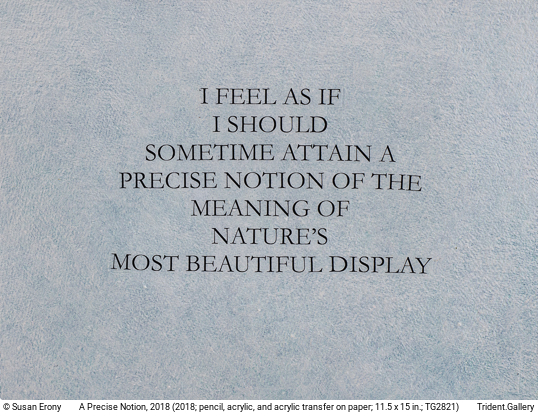
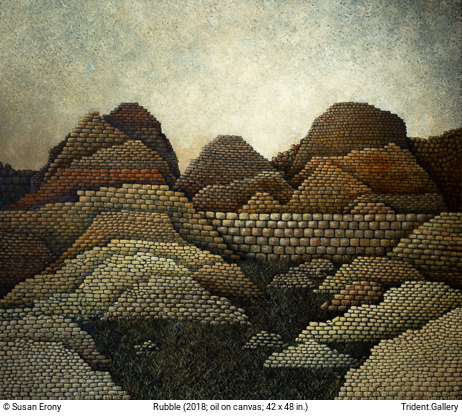
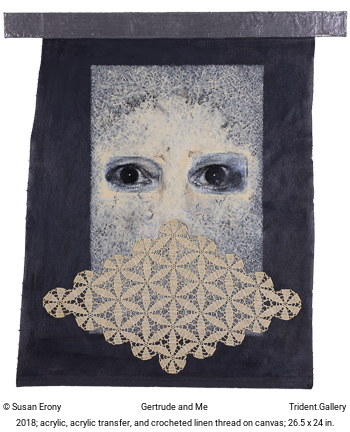
_1000x400px-screen-cap.jpg)